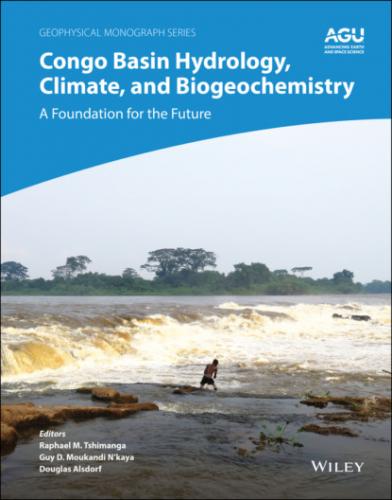Although the shallow meridional circulation and African easterly jet have been intensively studied over West Africa (e.g., Hagos & Zhang, 2010; Thorncroft et al., 2011), they could contribute in a different way to regional rainfall processes over central Africa. Over West Africa the well‐known “monsoon jump” and the associated seasonal meridional migration of rainfall is modulated by the northern component of the African Easterly Jet through inertial instability, whereas over Central Africa such modulation is not observed (Cook, 2015). In addition, differences in the shape of the northern and southern hemisphere of Africa lead to differences in the driving mechanisms of each local mid‐level tropospheric jet (Kuete et al., 2019) and the associated features (Adebiyi & Zuidema, 2017). Moreover, in a geographic sense, central Africa is unique as a region of deep convection bordered north and south by semi‐arid regions. This suggests that although understanding drivers of climate variability over central Africa may benefit from advances in knowledge of features as shallow meridional circulation and African easterly jet over other regions in Africa, specific investigation of their role over central Africa is needed to avoid misleading information.
Definition of seasons over central Africa rely on the ITCZ concept. Henceforth, challenging mechanisms linking the ITCZ structure and rainbelt (Nicholson, 2018; Suzuki, 2011) also suggest that reconsideration of the definition of seasons is necessary as they are also three‐month traditional seasons mostly based on mid‐ to high‐latitude seasonality and not suitable for tropical regions (Bombardi et al., 2019). Figure 2.1a shows that this traditional view of seasonality could apply only along a latitudinal band of about 5° width centred at the equator. However, several studies used the three‐month approach over a wider region (e.g., Dezfuli & Nicholson, 2013; Dyer et al., 2017; Hua et al., 2016; Pokam et al., 2011; Sandjon et al., 2012), which may inappropriately combine wet and dry precipitation regimes. Over the latitudinal band of bimodal rainfall regime (Figure 2.1a), we note an inhomogeneity of the length of rainy seasons (Figures 2.1b, 2.1c). An east–west contrast in rainfall seasonality is also observed across this bimodal region (Figure 2.1c). This picture questions the common three‐month seasons usually defined over central Africa and suggests complex interactions that shape regional seasonality.
2.3. CONVECTION
Weather over central Africa involves mechanisms on wide spatiotemporal scales. These processes span from individual convective cells to organized mesoscale convective systems interacting with global systems such as tropical waves (Hartman, 2020; Nguyen et al., 2008). Precipitation occurring from moist convection makes it a crucial component of the water budget in the atmosphere. The Congo Basin appears as one of the major areas of convective activities in the world (Jackson et al., 2009; Nesbitt & Zipser, 2003; Taylor et al., 2018; Webster, 1983) and hotspot of high‐frequency lightning (Zipser et al., 2006). Predisposed large‐scale conditions for strong thunderstorms and lighting are not yet fully explained over the basin due to lack of observations. Analysis from reanalysis shows that convergence uplift of low‐level wind associated with humid and warm air triggers intense thunderstorms. In addition, high convective potential available energy and low convective inhibition favor rising of air to easily reach the level of free convection. A recent study of Liu et al. (2020) shows that reinforcement of easterly wind is a bed for the development of intense thunderstorms. Skillful forecast of precipitation requires accurate representation of the development of convective systems. But in central Africa, mechanisms triggering and maintaining convection are less studied compared to what is investigated in West Africa, East Africa, or southern Africa. Past studies show that convection over the Congo Basin is influenced by many factors.
Figure 2.1 Climatology of rainfall regimes from CHIRPS (Funk et al., 2015) at 0.250 spatial resolution during the period 1981–2010 are represented with (a) spatial distribution of annual rainfall modes; (b) total annual length of rainy days during the wet seasons; and (c) climatological annual cycle of rainfall (black curve) and corresponding cumulative rain anomaly (green curve) at selected grid points over Central Africa along the transects 16°E and 25°E. Vertical lines, red and blue, delineate the rainfall seasons; time series with both sets of colors have a two‐season regime. The onset and cessation date of the season are materialized by dashed and solid lines, respectively. Annual rainfall modes and wet season dates (onset and cessation) are computed using the harmonic method introduced by Liebmann et al. (2001; 2012) and adapted by Dunning et al. (2016) for two‐season regions.
The direct dynamical effect of topography remains a hot topic and needs to be investigated in detail to unravel the physical mechanism modulating convection and rainfall. The results of Laing et al. (2012) show that deep convection is collocated with maxima in the 925–600
